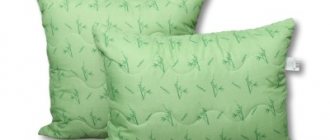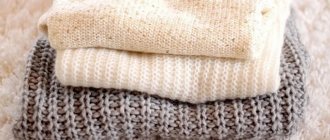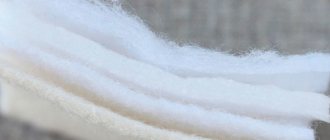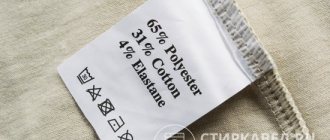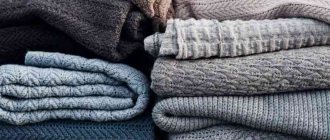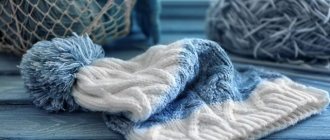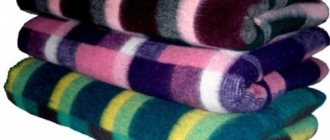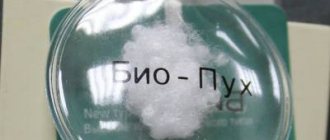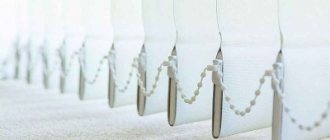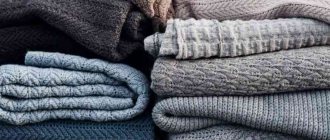The temperature for washing soft toys must be calculated so that the product does not lose its visual appeal and the materials are not subjected to unwanted thermal effects. There are soft toys in almost every home. They have long become children's favorites and collectibles and home decoration items for adults. But these things require periodic washing, because artificial materials easily absorb dirt and odors.
Children do not part with their favorites even in their sleep
Why do you wash soft toys?
Stuffed animals need washing because they are dust magnets. Warm room temperature (from 22 degrees), high humidity (from 55%), a large amount of dust - a pleasant atmosphere for the emergence and reproduction of dust mites.
Parasites can cause diseases of the mucous membranes, skin, and respiratory tract. Some forms of disease are so severe that the best option would be to take proactive measures to combat dust in toys.
It is recommended to clean soft pets at least once every 2 weeks, depending on the degree of contamination.
Drying rules
Simply washing and wrung out a stuffed animal is not enough; these actions can ruin the toys. Experienced housewives recommend adhering to only four rules:
- At the end of the wash, spin it manually; a terry towel can be an excellent handy tool, which will actively absorb excess liquid.
- Place the plush pet strictly horizontally and only in a well-ventilated area, so that the wet plush does not absorb foreign odors and become a carrier of a new unpleasant aroma.
- Depending on the material of the product, it can be hung, but only if it is not knitted or natural material, otherwise the object will lose its shape.
- Machine drying is prohibited.
Washing methods
Nowadays, there are many methods for washing toys. You can find out whether soft toys can be washed in a washing machine using the label attached to them. Usually the manufacturer writes not only about the method, but also indicates the optimal temperature regime.
It is necessary to choose the correct washing method to avoid deformation of the material, as well as loss of color.
Handwash
Hand washing is the most gentle method and is suitable when the item does not contain a washing label. Consistent instructions will tell you how to properly clean your soft friend:
- Pour warm water into a basin, the temperature of which is 30 degrees. If the plush figurine still has a label with the specified temperature, then you should give preference to it. The water level should be such that the object being washed is completely immersed in it.
- Wet your soft pet and soap it with powder or soap.
- Dip the product in water and leave it in it for 30-60 minutes.
- After time has passed, rub it with a clothes brush, if the material of the product allows this, knead it in your hands, squeezing out the remaining dirty water.
- Rinse several times until the water runs clear.
- Place it on the dryer, leave it in the sun outside, or place it near the radiator in a horizontal position.
Surfaces on which things are dried should be treated with antibacterial agents.
Machine washable
Machine washable only for those products that indicate this on the label. If there is no tag, then you should use these tips that will consistently tell you how to wash toys in a washing machine:
- Conduct an experiment to check for color loss after washing. To do this, apply alcohol to a bandage or cotton pad and apply it to the fabric in the most inconspicuous place. After 5 minutes, look at the results. If there are stains left, then machine washing is contraindicated. Toys that can be washed do not cause this reaction.
- It is recommended to immerse small items in a washing bag. The same goes for those toy items that have long pile.
- Select the delicate mode if the tag does not indicate which program to wash on. A gentle method will avoid fabric shedding.
- Do not spin at more than 600 rpm. Otherwise, the child will have to play with a very rumpled friend.
- Use the extra rinse function to reliably remove soap residue.
- Place in a horizontal position on the dryer, with a container underneath to collect the draining water.
Watch a detailed video about washing toys in a washing machine:
Cleaning
Some toys cannot be washed with water. For them, cleaning methods are provided using a dry method or using foam.
If your plush friend contains a large number of microcircuits that are quite difficult to remove, then you should only clean it using the dry method. To do this, you need to equip a vacuum cleaner with a special brush for cleaning furniture. With slow suction mode, you can get rid of dust and visible dirt.
Furniture cleaning foam is perfect for restoring the toy's clean condition. Many manufacturers of washing powders produce similar products. It can be replaced by a regular soap solution that can hold persistent foam. A regular sponge will help remove dirt. Excess moisture should be removed with a microfiber cloth.
Preparatory process
Initially, you should divide all the prepared items for cleaning into groups; this is done according to certain types:
- toys with musical inclusions that cannot be removed;
- expensive fabrics for which it is necessary to select a delicate type of washing;
- the presence of various stripes on the outside (buttons, beads, small objects);
- toys made from combined fabrics.
When everything is sorted out, it becomes clear whether to wash your little one’s pets in the washing machine or whether it is better to give preference to other cleaning methods. Of course, other options may take longer than automatic washing, but they can be more effective.
So, you shouldn’t risk your baby’s favorite. Therefore, before you start washing directly, if you have doubts about the filler or the quality of the paint, you can check its durability on a small area of the fabric. In order to do this, you need to prepare alcohol, gauze and a little time. You need to apply alcohol to a small piece of gauze and rub this mixture on a small piece of the toy for a minute.
Naturally, it is better to do this in the most inconspicuous place (under the ear or tail). If there are no stains or other marks on the fabric due to manipulation, you can safely start washing without worrying about the color scheme changing.
If you follow the basic recommendations, you can avoid many negative consequences that ultimately lead to damage to your favorite thing. Currently, the situation with determining the material and filler is much simpler, since this information is generally indicated on all tags.
How to restore a toy after washing
An important step in caring for a toy is restoration after washing. Initially, it is worth remembering that you should dry your child’s soft friends only in a horizontal position. This way, all the water will drain from them without additional squeezing, which can lead to damage to the material.
Do not hang play items on clothespins, especially knitted toys. The yarn can stretch under the weight of the filler, which will lead to distortion of the pet's shape. It is best to dry knitted items on a terry towel.
Long hair on soft pets should be combed using a regular comb. To speed up the process, it is recommended to use a hairdryer to dry the fibers on the toy.
If the filler was removed before washing, the fabric “skin” can be ironed after drying. Toys should be ironed in the same way as clothes made from similar materials.
Products for washing and cleaning soft toys
To care for soft pets, you should choose products that are suitable for the child. It is important to remember that if your baby is allergic to any cleaning products, then using them for cleaning is prohibited.
It is recommended to take only natural baby powders and soaps. Be sure to rinse the product several times to remove any remaining cleaning agent.
When washing toys with long piles, it is best to use fabric softener. This will preserve the quality of the product for a long time.
To preserve color, add ½ tsp to the powder. citric acid. A solution of lemon and warm water helps get rid of yellow spots on the surface of the product. And ethyl alcohol does an excellent job of removing grease stains.
Starch or baking soda are suitable for dry cleaning. These products are less likely to harm the child, but you should carefully remove residues from the surface with a brush to avoid allergic reactions.
Watch the video and a simple DIY home remedy for washing toys (don't forget to rinse well after the process):
Superficial wet cleaning
When washing manually or automatically, the eyes of the toy may be erased or the body may be deformed. Superficial cleaning of plush animals will allow you to avoid such an outcome. In order to return the product to freshness and purity, you should:
- Lightly moisten the surface, for example, with a spray bottle.
- Apply a little foam or dishwashing detergent.
- Rub gently with a brush or soft cloth.
- Carefully wipe away any remaining foam with a clean cloth.
- Dry and comb the toy.
Folk remedies are also quite suitable for caring for products. Instead of the usual soap or powder for surface cleaning, you can use mustard powder. It is mixed with water in a one to one ratio and then applied to the material. The composition should be left until completely dry, and then carefully cleaned with a brush. This option is not suitable for fur that is too long. For “furry” animals, you should use lemon juice, vinegar, and hydrogen peroxide.
How to wash a large toy
Large toys with fillings are available not only for children, but also for adults. Washing such a pet is not an easy task. There are several ways to solve this problem.
The easiest way is to take your plush pet to the dry cleaner. The workers know how to properly wash large toys in order to return them to the owner in proper condition.
The second method requires physical effort. You will need to put a large toy, for example, such as a shark from Ikea, in a bag, adding 1 cup of starch or soda to it. Then you need to securely tie the polyethylene and shake for 20-30 minutes, knocking out the dust. Subsequently, the soft animal is removed, and the remaining cleaning agent is removed from it using a regular clothes brush or vacuum cleaner.
The third washing method seems simpler, but laborious. To begin with, you should rip the toy apart along the seam, removing the filling from it. Then the fabric needs to be immersed in a washing machine or washed by hand. After drying, hammer the inner component back into the fabric, sewing it neatly along the seam.
Drying products
How to wash a large one at home if it is not possible to wash a large soft toy in an apartment. You can often wash a large teddy bear at home using baking soda. The product is evenly distributed over the pile, rubbed in, then after a while combed out with a thick comb or stiff brush.
More effective cleaning agents will help remove stains. This can be foam for removing stains from furniture upholstery.
It is important to thoroughly remove residues after cleaning.
Do you want your soft toys to look attractive again? You can eliminate messes with a gentle touch, using a brush or sponge when washing is unacceptable.
How to wash toys with different fillings
It is usually not only the outer fabrics of the product that complicate the washing process and choose its method, but also the internal filling. Different fillers require a special approach to cleaning. Otherwise, the risk of product deformation increases.
To develop fine motor skills of the hands, manufacturers produce anti-stress toys with small balls. The difficulty of washing is that such a toy cannot be placed in a washing machine. Only hand washing will help prevent the seams from unraveling and the balls from rolling out.
Soft friends with batteries, as well as microcircuits that allow them to reproduce voices, require careful attention to themselves. They should not be allowed to come into contact with water, otherwise the toy device will become unusable. An easier way would be dry cleaning with a vacuum cleaner, which will not harm the microcircuits of musical toys.
Funny characters filled with synthetic padding polyester and foam rubber can be washed without the seams bursting. In this case, you must remember about the delicate washing mode. If the product is large, then the inner material must be removed and then washed separately in a bag, which will allow you to avoid losing pieces of the filler.
Basic rules for washing in a washing machine
Sequence of manipulations:
- Initially, you need to carefully examine the tags on the toy. It is from this information that it is possible to find out whether the item can be washed in a machine. The fact is that the manufacturer constantly writes this information;
- After a detailed study of the tags, the item is checked for the presence of additional electronic mechanisms. If there are any, they should be removed (since after cleaning they may become inoperative). To do this, an incision is made in the most inconspicuous place and the existing mechanism is removed;
- Things are now re-inspected for the presence of additional plastic parts (it is also better to remove them to avoid damage and deformation). After the cleaning process is completed, they can be easily placed in place (using a needle and thread or glue). It’s easier to do everything as described than to then explain to the baby how his pet was left without one eye;
- The baby’s pet is placed in a bag (you can make it yourself from fabric or purchase a ready-made version). In this way, external damage to the toy can be prevented. This will also protect the machine from lint or other problems;
- Referring to the manufacturer's recommendations, you need to choose the most optimal option for washing. It happens that the label is torn, but there is no need to despair. The fact is that it is better to wash almost all toys on a delicate cycle. That is, we choose a temperature of 30 C (this way the baby’s pet will be intact and the washing will be successful). But at the same time, you need to remember that dust mites that are found in toys die only at a temperature of at least 60 C;
- We pay special attention to the fact that when cleaning your pet's crumbs in the machine, it is better not to use the spin function. Thus, you can be sure that the shape will be preserved. It is better to give your preference to a towel. But if it is written on the toy that washing can be done with a spin cycle, then you should turn on the rinse again (this will remove excess powder);
- Again, let’s remember the detergent and note that preference should be given to children’s detergents. And as an additional product - conditioner for children's clothes. This helps preserve the original appearance of the toy;
- If you are worried that the color scheme of your pet may change during the cleaning process, you must additionally add approximately half a teaspoon of citric acid to the detergent used.
In order to be sure that the fluffies are completely clean and that the fabric base contains no chemicals used for washing, it is best to additionally rinse the toy in a bowl of clean water after all manipulations. If you don't want to do it manually, you can simply select the additional rinse mode.
For large pets that simply cannot fit into the machine, it is recommended to clean them manually. This is done with baby shampoo or soap and a rag.
Important! If the color of the fabric has changed significantly (it has changed its original color), it means that it contained a large amount of chemicals that are very unsafe for the child. It is better to protect such a thing from contact with the baby.
Features of washing during quarantine
During quarantine, the issue of disinfection is especially pressing. Soft friends can become carriers of dangerous viral diseases. To prevent infection, you should pay special attention to washing toys.
It is recommended to use cold or heat for disinfection. Hot steam from an iron or steamer is suitable for this. It is enough to direct a stream of steam at the toy and wait a few minutes to destroy pathogenic bacteria.
A regular freezer does a great job of killing germs. This is how people have been fighting dust mites for a long time. The soft friend needs to be placed in a bag and then placed in the freezer overnight. Once removed, the safety of the soft product is guaranteed.
A quartz lamp will be an excellent helper in everyday life. Ultraviolet radiation helps to reliably get rid of various types of bacteria.
Under no circumstances should you use bleach. This product will not only destroy germs, but will also harm the child’s health.
During the quarantine period, it is recommended to wash soft toys at least once every three days. It is worth choosing the maximum or minimum possible washing temperatures. After the procedure, you should treat your plush pets with boiling water.
How to get rid of dust mites
If you don't take care of a soft toy for a long time, dust mites will appear in it over time. The danger comes not only from the ticks themselves, but from their waste products. The substances they contain cause severe allergies in both adults and children, which can be expressed as bronchial asthma, atopic dermatitis, allergic rhinitis, Quincke's edema, etc.
You can get rid of them in several ways:
- Cold. Place the soft toys in a bag and place them in the freezer for 2 days. This will kill mites and germs. If the toy is large, then it is best to do this in winter, leaving it on the balcony in the cold.
- Steam treatment. For this method, you can use a steam generator, iron or steam cleaner. A blast of hot steam will also help get rid of pests.
- Ultraviolet. It is enough to leave it in the sun in hot weather for several hours or use a quartz lamp.
What toys cannot be washed
Many toys cannot be washed either in a machine or by hand. This is explained by the characteristics of the materials from which the product is made. The summary table contains information about whether toys with certain features can be washed:
| Peculiarities | Prohibited washing method | Care instructions |
| Contains glued parts - bows, eyes, nose, mustache, ribbons | In the washing machine | Hand wash without spinning. |
| The product has plastic inserts | In the washing machine | Machine wash in a special bag (not recommended, as parts may come off, but if they are in a bag, they are easy to assemble). The best way is to wash by hand. |
| Made from natural fabrics | In the washing machine | Wash by hand at a water temperature of no more than 30 degrees. Do not squeeze. |
| Contains organic filler - feathers, sawdust, buckwheat husks | Any wet wash | Avoid contact with water. Use a vacuum cleaner to remove dust. |
Dry cleaning (editorially verified)
It applies to soft toys that may become unusable due to contact with water. In them, the filling of small balls, the so-called anti-stress toys, or the mechanism is stretched along its entire length, for example, in the paws, head, and it is impossible to pull it out carefully by ripping out one seam.
Method 1
Vacuum soft toys every three weeks using a furniture attachment. This will remove dust and dust mites from the outer layers of the filler.
Method 2
- Place the toy in a large plastic bag with baking soda or starch.
- Tie it tightly and shake the product in it for about 5-8 minutes. Baking soda absorbs dust and dirt.
- Remove the toy from the bag, brush off the soda or starch and vacuum it.
Verified by the editors:
First of all, we check the bag for strength, pour in a pack of soda. We place the toy, in our case it is a small polar bear, tie it and shake it over the bathtub or sink. It's more reliable. You don’t have to shake it, but rather rub soda into the toy.
Then we clean the bear with a brush with medium-hard bristles, shaking off the soda. This action will further fluff up the pile. Vacuumed. I didn't even need to comb it. Has the little bear become cleaner? - Yes, definitely.
Conclusion: a very convenient way to clean soft toys, simple. Visually, it seems that the “after” photo is lighter, but the effect is really noticeable.
